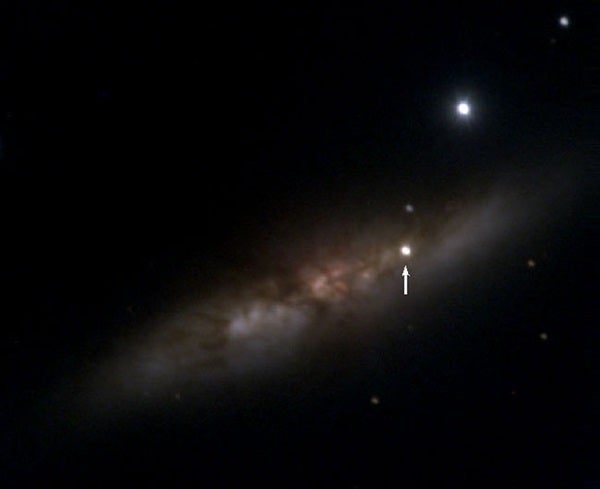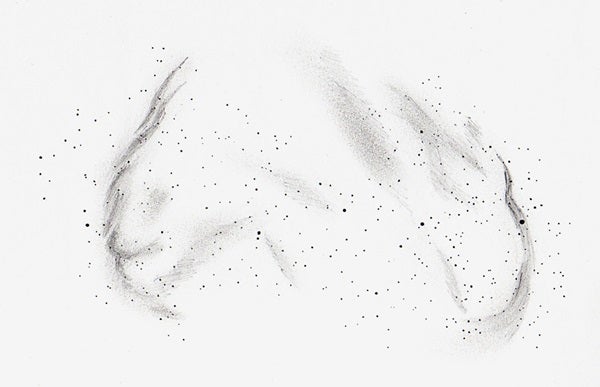In this column, I want to encourage you to sketch the last moments of a massive star’s life — an event known as a supernova — and the debris visible after such an explosion — a supernova remnant.
Astronomers document hundreds of supernovae each year, but few shine brightly enough for visual observers to enjoy. On January 21, Steve Fossey, a faculty member at University College London, and his astronomy class discovered SN 2014J, a supernova that reached magnitude 10.5. Immediately, skywatchers pointed even the smallest telescopes at its host, the Cigar Galaxy (M82) in Ursa Major, to soak in the view.
A supernova looks like a new star, which may glow for weeks before fading. SN 2014J was a type Ia supernova, one that occurs in a binary star system when a white dwarf accumulates material from its neighbor. Once the dwarf gathers as little as 0.9 solar mass, it becomes unstable and undergoes a thermonuclear explosion.
The former sun shines briefly with the light of 1 billion normal stars. The nearly uniform luminosity of type Ia supernovae makes them useful distance indicators and led to the discovery of the universe’s accelerating expansion.
All other types of supernovae are the core-collapse variety, which happen when a massive star exhausts its nuclear fuel. The core implodes and — depending on its mass — either a central neutron star or a black hole remains.
When you sketch such an event, indicate the supernova with a pointer for easy identification. Also, note its magnitude by comparing it to the brightness of nearby stars.
Then record it by sketching it at the same size and darkness (for a black on white sketch) as an equally bright star. During additional sessions, you will record its change in magnitude, so try to be as accurate as possible in your drawings.
The second target for this month’s column is a supernova remnant called the Veil Nebula. Such an object marks the aftermath of an exploding star. The Veil Nebula is 1,400 light-years away in the constellation Cygnus the Swan. The entire complex spans nearly 3° and lies an equivalent distance south of Epsilon (ε) Cygni. Prominent segments include the Eastern Veil (NGC 6960), Pickering’s Triangle (NGC 6979), and the Western Veil (NGC 6992/5).
The remnant is a bit tough to see, but an Oxygen-III or Ultra High Contrast filter in a 10-inch or larger telescope will reveal it. You may see the entire loop through a low-power, wide-field eyepiece, but you’ll need to pan the area at higher magnifications to dig out the details. That means sketching multiple fields of view to capture the remnant.
Start by drawing a circle that represents each field. The circles overlap, and the collective finished sketch shows each field boundary. Alternatively, you can eliminate the constraints of sketch circles and opt for a clean, open-field drawing.
In the second case, sketch the field of view for an area containing a bright section of the Veil. Then nudge your telescope until roughly half the field disappears. The effect will be one where each field of view overlaps the previous one.
When you overlap, it enables you to cross-reference star fields while you’re sketching your way through the loop. And here’s a little-known tip: Your dark adaption will have increased during the observation, so to complete the sketch, make a final pass to include missed nebulosity and faint stars.
Questions or suggestions? Please contact me at erikarix1@gmail.com.












